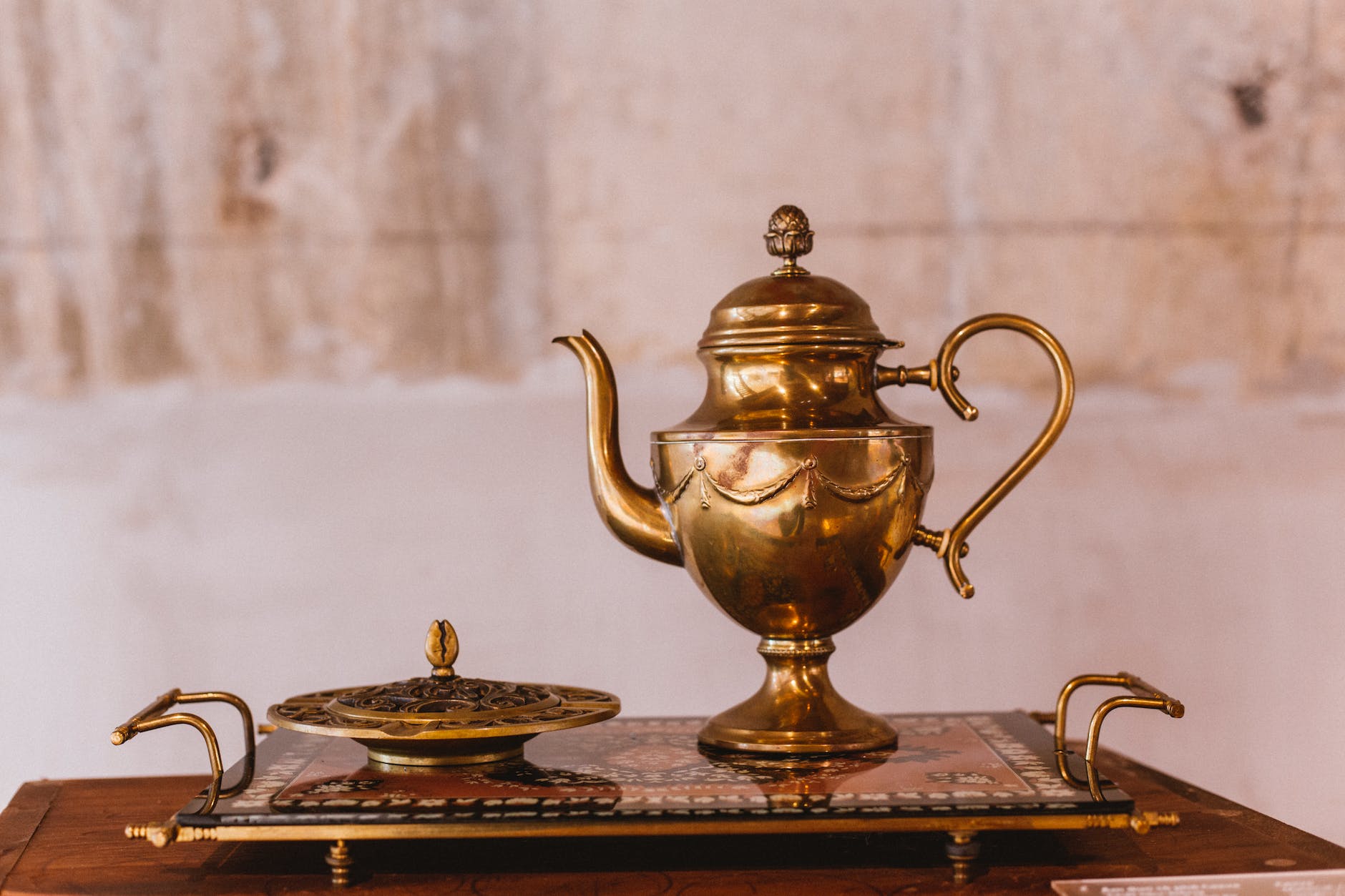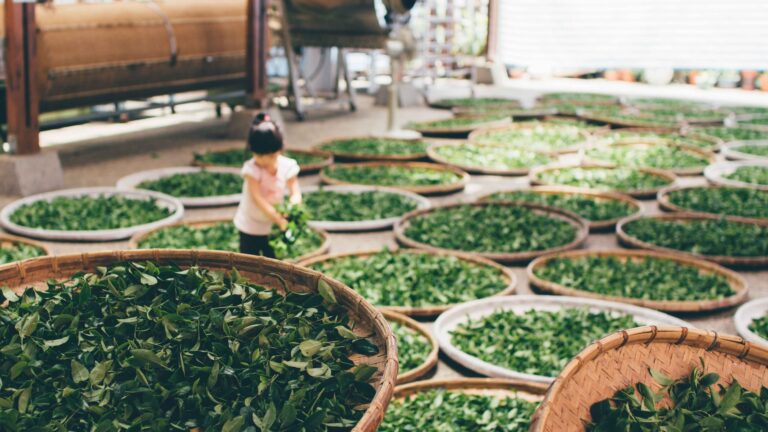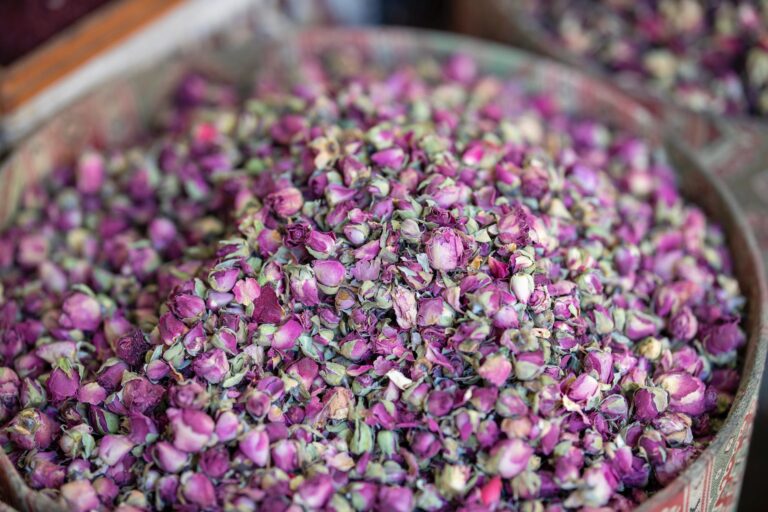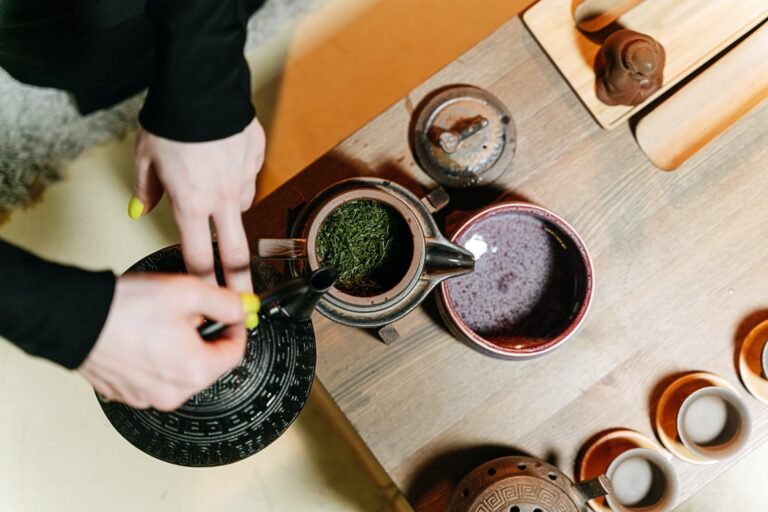The Art of Oxidation: Mastering the Craft of Tea Fermentation
Introduction
In the enchanting world of tea, oxidation stands as a pivotal process that transforms the green, fresh leaves into a spectrum of flavors and aromas. This transformative stage, often referred to as fermentation in the tea industry, is not just a chemical reaction; it’s an art. It holds the key to unlocking the profound depths of tea’s character. This article delves into the intricacies of tea oxidation, exploring its crucial role in defining the essence of different teas and the mastery required to perfect this process.
Understanding Oxidation in Tea Making
The Science Behind Oxidation
Oxidation is a natural process that begins once the tea leaves are plucked and exposed to the air. Enzymatic reactions cause the leaves to undergo chemical changes, leading to the development of new flavors, colors, and aromas. This process is akin to how an apple turns brown when cut and left exposed.
Types of Tea and Their Oxidation Levels
The degree of oxidation significantly influences the type of tea produced:
- Green Tea: Minimal or no oxidation, preserving a fresh, grassy flavor.
- Oolong Tea: Partially oxidized, offering a diverse range of flavors.
- Black Tea: Fully oxidized, resulting in rich, bold flavors.
The Nuances of Oxidation in Different Teas
- White Tea: Often minimally processed with very light oxidation, white tea retains a delicate flavor and a high level of antioxidants.
- Yellow Tea: A rare variety, yellow tea undergoes a unique oxidation process that imparts a mellow, smooth taste.
The Artisan’s Role in Oxidation
Controlling the Oxidation Process
The skill of the tea maker plays a crucial role in controlling the oxidation process. This involves managing various factors such as temperature, humidity, and the duration of exposure to air.
Techniques Used in Oxidation
Artisans use several techniques to either accelerate or slow down oxidation. These can include rolling the leaves to break down cell walls, spreading leaves in a controlled environment, or even manipulating the leaves by hand to ensure even exposure.
The Art of Timing in Oxidation
Timing is crucial in the oxidation process. Even a few minutes can make a significant difference in the flavor and quality of the tea, requiring keen observation and experience from the artisan.
Traditional vs. Modern Oxidation Methods
Preserving Ancient Techniques
In some regions, traditional methods of oxidation are still practiced, where leaves are spread out in bamboo trays and monitored closely for the desired level of oxidation. These methods rely heavily on the artisan’s intuition and deep understanding of the leaves.
The Evolution of Oxidation Methods
While traditional methods are revered, modern techniques have evolved to enhance consistency and efficiency. These methods often involve controlled environments that can replicate ideal oxidation conditions, regardless of external weather or climate challenges.
Balancing Tradition with Innovation
The tea industry often sees a harmonious blend of traditional wisdom and modern technology in oxidation methods. This balance ensures the survival of traditional flavors while meeting the demands of a growing global market.
The Impact of Oxidation on Tea Flavor
Developing Complex Flavors
Oxidation is responsible for developing the complex flavors and aromas in tea. It can bring out sweet, floral, fruity, or malty notes, depending on the tea type and oxidation degree.
The Transformation of Aroma Compounds
During oxidation, various aroma compounds in tea leaves transform, giving rise to new scents and tastes. This metamorphosis is what makes each type of tea unique and distinct.
Oxidation and Tea Color
The color of tea leaves also changes during oxidation. Green teas retain their green hue due to minimal oxidation, while black teas acquire a darker, richer color due to full oxidation.
The Role of Oxidation in Tea’s Health Benefits
Antioxidant Properties
Oxidation affects the antioxidant properties of tea. Green teas, with minimal oxidation, retain a high level of catechins, whereas black teas, fully oxidized, have more complex theaflavins and thearubigins with different health benefits.
The Therapeutic Aspects of Oxidized Teas
Oxidized teas like black and oolong have been studied for their potential health benefits, including heart health, digestion, and stress reduction, due to the unique compounds formed during the oxidation process.
Oxidation Across Different Cultures
China’s Diverse Oxidation Practices
In China, the birthplace of tea, different regions have mastered the art of oxidation uniquely, contributing to the country’s vast diversity of teas. Each region, from the misty mountains of Yunnan to the rolling hills of Fujian, has its distinct style of oxidation, influencing the local tea varieties profoundly.
Regional Specialties and Their Oxidation Techniques
- Yunnan’s Pu-erh Tea: Known for its post-fermentation process, Pu-erh undergoes a unique aging process that can last for years or even decades, enhancing its depth and complexity.
- Fujian’s Oolong Teas: Fujian province is famous for its oolong teas, like Tieguanyin, which undergo a meticulous semi-oxidation process, creating a perfect balance of freshness and richness.
Oxidation in the Japanese Tea Industry
Japan, predominantly known for its green teas, employs minimal oxidation, focusing on preserving the natural green color and fresh flavors of the leaves. The precision and care in controlling oxidation reflect the Japanese dedication to quality and tradition.
The Craft of Japanese Green Teas
- Sencha: The most popular Japanese green tea, Sencha, goes through a brief and controlled oxidation phase, resulting in a delicate balance of sweetness and astringency.
- Gyokuro: This premium Japanese tea is shaded before harvesting to enhance its sweetness, followed by minimal oxidation to preserve its distinct umami flavor.
Challenges in Perfecting Oxidation
Balancing Tradition and Consistency
One of the greatest challenges in mastering oxidation is balancing traditional methods with the need for consistency, especially in the face of varying environmental conditions. Artisans often face the dilemma of maintaining the authenticity of their traditional practices while adapting to the changing climate and market demands.
Adapting to Climate Change
- Climate change poses significant challenges to traditional oxidation methods, as fluctuations in temperature and humidity can affect the consistency and quality of the tea.
- Tea masters are continuously experimenting and adapting their techniques to counter these environmental changes while preserving the essence of their traditional methods.
Training and Skill Development
Oxidation requires a deep understanding and years of experience. Training new generations of tea makers in this art is crucial for the continuation of quality tea production. The transfer of knowledge from seasoned artisans to the younger generation is key to preserving these ancient techniques.
Preserving Artisanal Wisdom
- In many tea-producing regions, there are dedicated institutions and mentorship programs aimed at passing down the knowledge and skills of tea oxidation.
- The younger generation of tea makers is being encouraged to learn and innovate within the framework of traditional practices.
Modern Adaptations and Innovations
Embracing Technology Mindfully
The thoughtful integration of technology in traditional tea making can enhance efficiency and reach without compromising the authenticity of the tea. Many tea farms are now using modern tools to monitor and control the oxidation process more precisely.
Innovations in Oxidation
- Computer-controlled oxidation chambers are being used to maintain consistent temperature and humidity levels, allowing for more uniform oxidation.
- Despite these technological advancements, the human element remains crucial, with tea masters making the final decisions based on their expertise and intuition.
Global Awareness and Appreciation
There’s a growing global appreciation for traditionally made teas. This awareness is crucial in supporting these ancient practices and the communities that uphold them. As more people become interested in the origins and making of their tea, the demand for traditionally oxidized teas grows.
Promoting Traditional Teas
- International tea expos and competitions are platforms where artisans can showcase their traditionally oxidized teas, gaining recognition and appreciation.
- Online platforms and social media are also playing a significant role in educating consumers about the value of traditional tea-making practices.
Conclusion: The Essence of Oxidation in Tea
The art of oxidation in tea making is a testament to the delicate balance between nature and human craftsmanship. It’s a process that requires knowledge, patience, and a deep respect for tradition. In every cup of tea, whether it be a robust black tea or a delicate oolong, we taste the fruits of this intricate process. Oxidation not only shapes the character of the tea but also connects us to the cultural heritage and the skilled hands that have mastered this craft. In embracing the art of oxidation, we celebrate the true, the good, and the beautiful in the world of tea, honoring a tradition that has been steeped in history and savored across generations.






